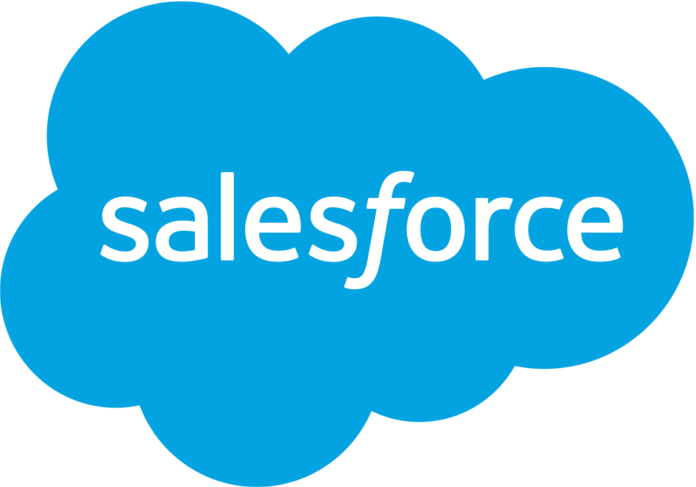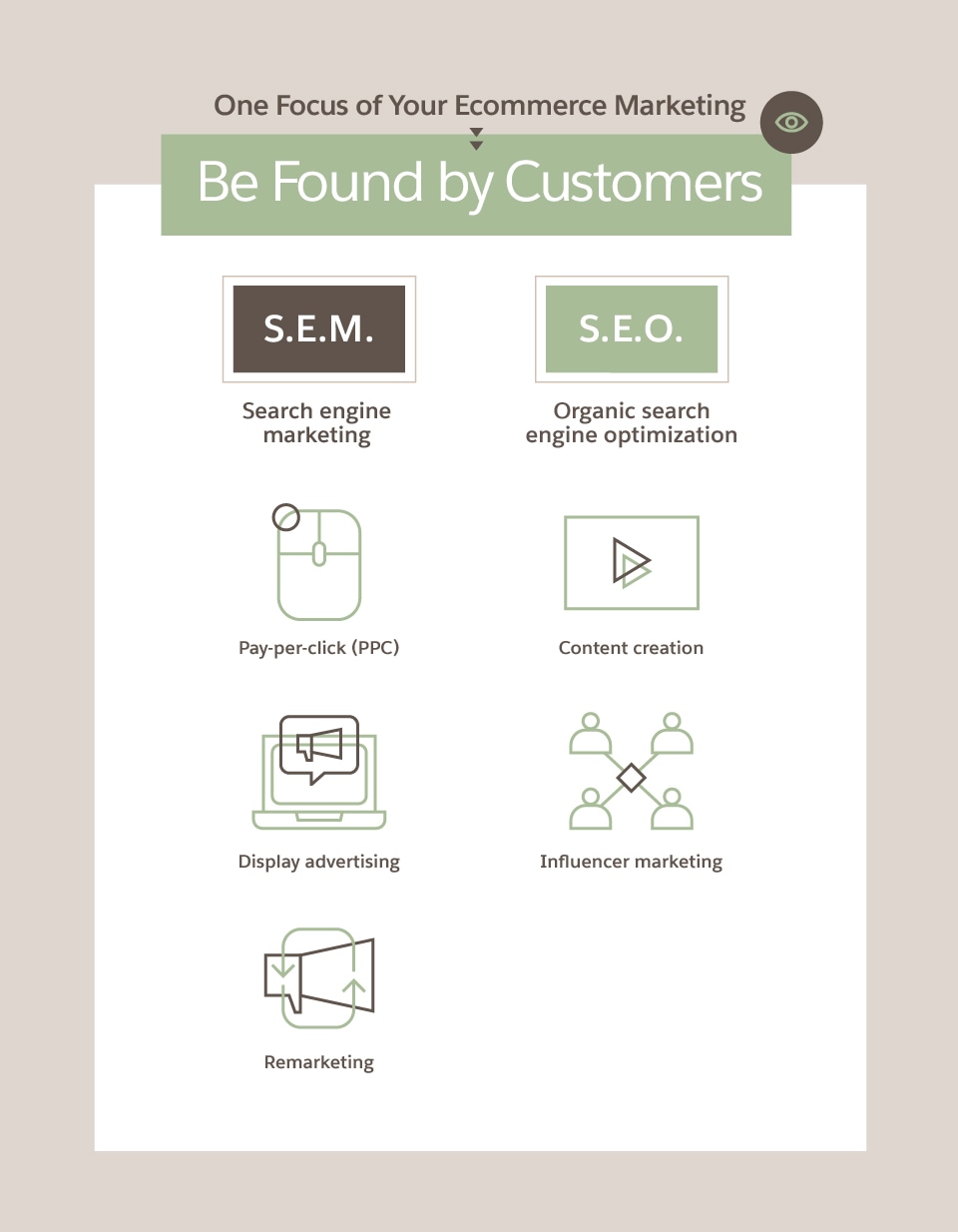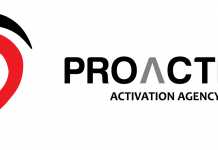 Just like brick and mortar, ecommerce requires a multifaceted, well-thought-out marketing strategy in order to succeed. Fifteen years ago, you wouldn’t expect to simply rent a storefront, throw up some signage, and have customers hand over fist. It’s no different when it comes to online sales. Online retailers have to create specific goals, identify productive strategies, and blend a variety of marketing tactics in order to create a foundation for long-term success.
Just like brick and mortar, ecommerce requires a multifaceted, well-thought-out marketing strategy in order to succeed. Fifteen years ago, you wouldn’t expect to simply rent a storefront, throw up some signage, and have customers hand over fist. It’s no different when it comes to online sales. Online retailers have to create specific goals, identify productive strategies, and blend a variety of marketing tactics in order to create a foundation for long-term success.
Confused about where to begin? We’ve outlined the most common strategies and tactics to achieve your goal of increasing online sales. Please take note that this is a high-level overview — we recommend that you perform additional research before finalizing your approach, and ensure you and your team fully understand the terms in bold, as they are important to your ecommerce marketing strategy.
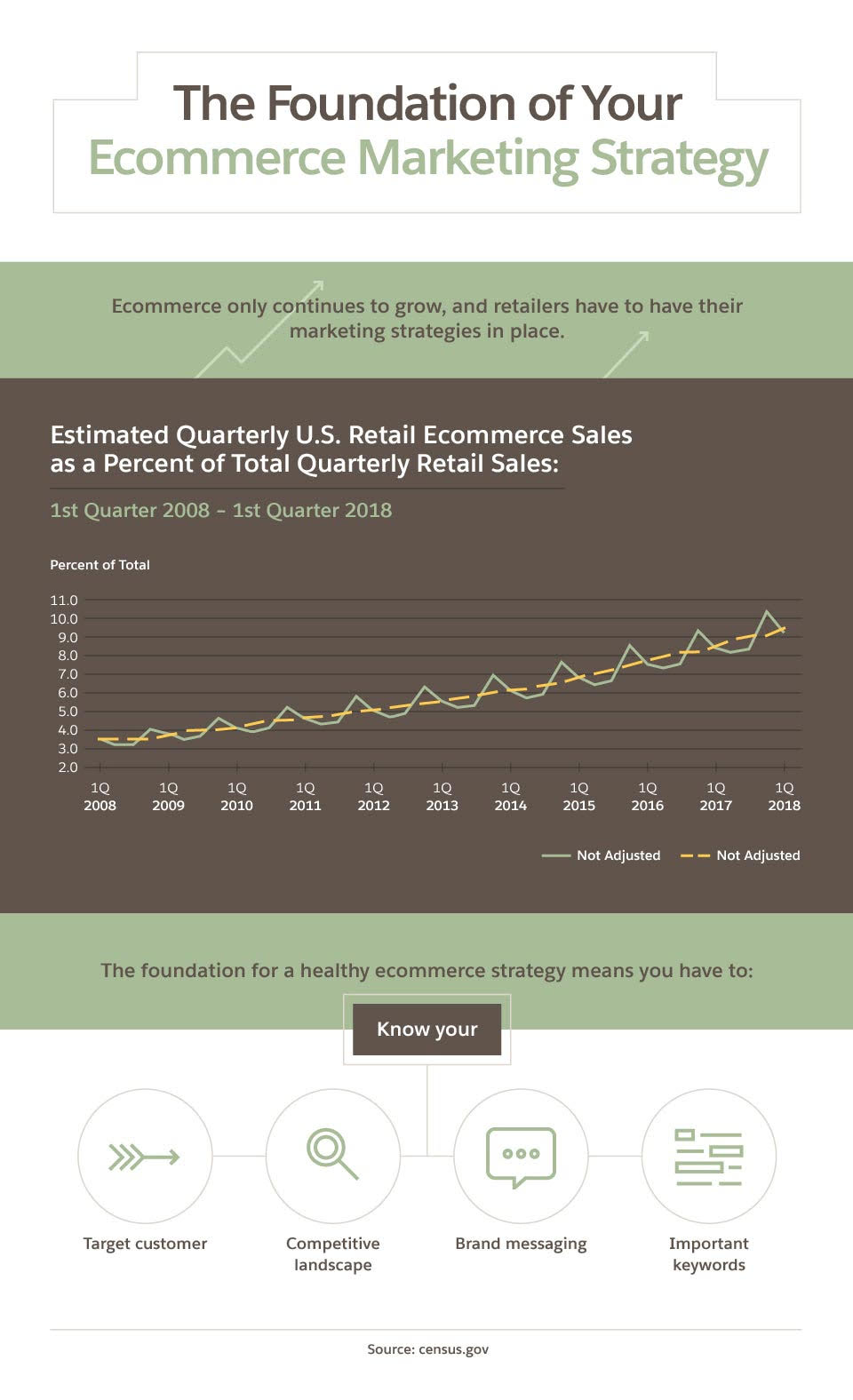 Before you begin.
Before you begin.
If you lay an unstable foundation, any strategy you build on top of it will sooner or later fall. Set your foundation by knowing your audience; every element of your marketing strategy will only succeed if you can accurately identify your target customer.
Great places to conduct customer research include public forums, review sites, and social media. These users are clearly interested in your product category, and they tend to reveal a lot about themselves and what they’re looking for in their posts and when talking to other users. From reading these discussions, you should be able to glean basic demographic information, such as gender identity, age, occupation, if the buyer is married or has children, and so forth. Couple research from these outlets with additional data from customer interviews, focus groups, surveys, and your customer relationship management (CRM) platform to get a good feel for who your target customer is. What you learn about your customer base will inform the development of the rest of your marketing strategy foundation.
- Competitive landscape: You can get an accurate idea of your competition from product reviews and discussions, along with how your buyers feel about those competitors’ price points, key features, and product quality.
- Brand messaging: After doing your customer research, identify two or three main value propositions you want to incorporate into your messaging. Then decide on three to five specific data points or other facts you can use to support your message.
- SEO keywords: You must have an accurate list of the keywords you want to use for search engine optimization (SEO) before embarking on any marketing strategy. Thankfully, you have plenty of options for tools that can help you identify high-volume, low-competition keywords for your brand and your market.
Strategy development and execution.
Think of your approach toward both digital marketing and ecommerce user experiences as a journey. Your first step is to outline your goals, which you can think of as your final destination. Strategy is then identifying the roads that will get you there. The actual journey is made up of the tactics you employ along the way.
Your goal here is easy to define: Increase online conversions. Below are some key strategies and tactics to help get you to your destination.
Strategy: Search Engine Marketing (SEM)
SEM refers to paid advertising campaigns. While organic content alone, done correctly, will slowly increase the number of eyes on your site, a well-executed paid campaign will get you there much faster. SEM is completely reliant on the SEO keywords you identified earlier, so keep that list handy.
TACTIC 1: PAY-PER-CLICK (PPC)
PPC refers to ads that appear on search engine results pages. Here, it’s best to focus on Google Adwords since it has far and away the most traffic. Overall campaigns help you organize at a high level and set a group of search pages where your ad can appear, while ad groups let you further focus your keywords to get more qualified leads. Create a PPC landing page where users who click on your ads will be directed, and leverage your keywords so Google knows it’s related to your PPC campaign. Finally, keep a very close eye on your quality score, which is Google’s evaluation of how relevant your campaign is to your keywords.
TACTIC 2: DISPLAY ADS
Display advertising includes the banners, sidebars, and other visual advertisements that appear on other websites. Display ads are facilitated by ad networks such as Google Display Network, and use many of the same elements as your PPC ads. Display ads also incorporate visual elements, so make sure your product photography and graphic design are top notch.
TACTIC 3: REMARKETING
Remarketing positions targeted ads to users who visited your website and left without making a purchase. This approach can yield big results since it targets leads that have already expressed interest in your product. These ads show on any website that accepts advertising through the Google Display Network. You’ll manage these through Google Adwords.
Strategy: Organic (Free) Search Engine Optimization (SEO)
Unlike the paid advertising methods described above, SEO traffic generates unpaid, organic results across search engines such as Google and Yahoo. Search engine algorithms take into account elements like relevant content, inbound links, and social media engagement.
TACTIC 1: CONTENT CREATION
There are countless ways you can generate content, such as the ads we outlined above, website content, blog posts, and social media posts. Reports, research, and thought-leadership pieces should also be content priorities. The messaging and keywords you identified earlier serve as the foundation of SEO and should be leveraged in your content. There are lots of tips and tricks you can use to help your content get recognized by Google, but don’t just stuff your pages with keywords; Google will punish you if you do. Instead, offer real thought leadership, give helpful information about your products, and link to internal and external resources that are relevant to your audience.
TACTIC 2: INFLUENCER MARKETING
Affiliate or influencer marketing leverages marketers and individuals who have a loyal, targeted following and rely on the influencer’s referrals, such as reviews, social mentions, and testimonials. These influencers receive a set commission for referred sales and generate leads for you by telling users interested in your product category that your site or product is worth checking out. When reaching out to an influencer, first engage with them through social likes, shares, and comments. Only when you’ve established a kind of relationship with them should you contact them privately to ask whether they’d consider working with you.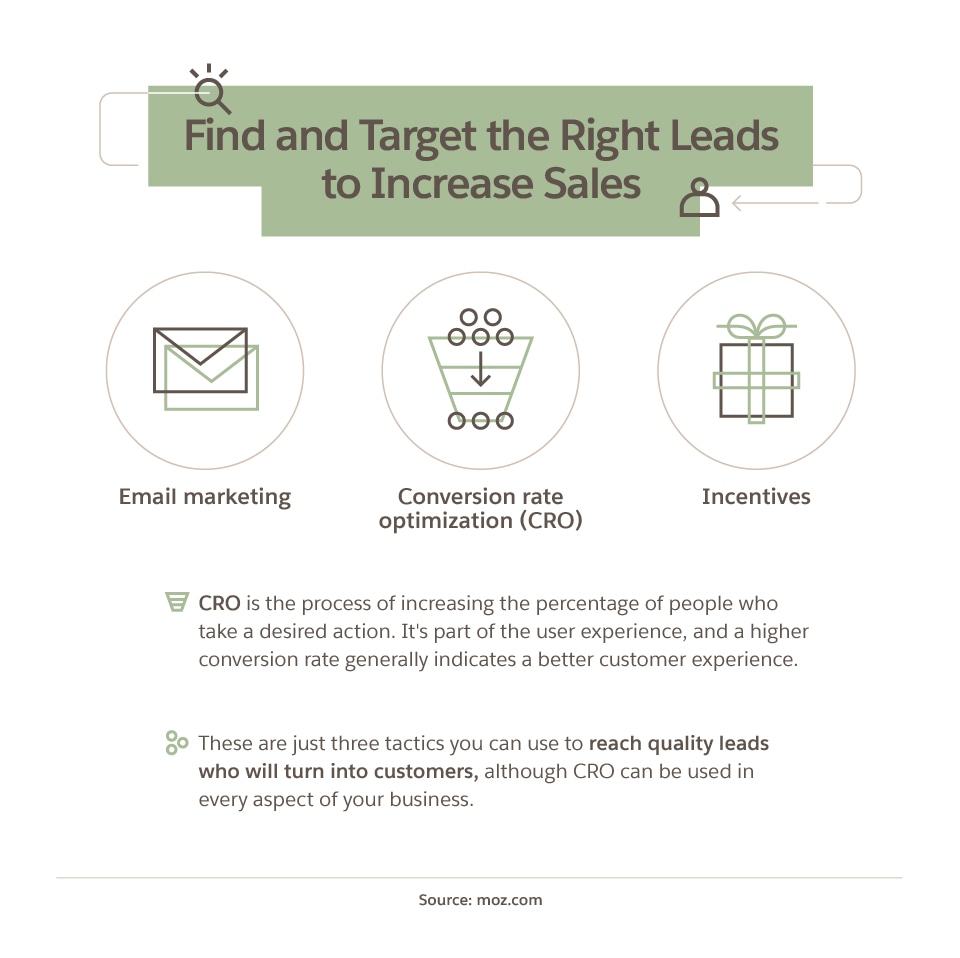
Strategy: Better Quality Leads
Exposure is all well and good, but at the end of the day, you want qualified leads who are more likely to convert into sales.
TACTIC 1: EMAIL MARKETING
Similar to retargeting, email marketing is used to contact potential, current, and past customers with targeted content designed to convince them to make a purchase. You can’t email just anyone; only users who have given you permission to send them marketing materials should receive your email campaigns. That means you need to create avenues for them to register with you or otherwise give you their email address, such as opt-in forms, white papers and other downloadable content, or contests.
TACTIC 2: CONVERSION RATE OPTIMIZATION
This refers to the user experience you provide to visitors to your site or ecommerce portal. Conversion rate optimization means consistently testing and tweaking elements such as product landing pages, the layout of your menu, the number of calls to action to provide, and product photography and descriptions to improve sales. For example, if users who begin to fill out a form to register for newsletters don’t complete registration, consider reducing the number of fields you require them to fill out. Eventually, you’ll land on a mix that works for your sales funnel.
TACTIC 3: INCENTIVES
First-time buyers are difficult to convert because they have no experience with your brand. If you’ve got visitors to your site who are on the fence, sometimes incentives are all you need to push them over the edge. Offer free returns, a first-time purchase discount, or referral rewards. The point is to get your product in their hands and let it speak for itself.
Strategize for success.
Unfortunately, you can’t just launch an ecommerce store and expect customers to flock to you. In fact, you can’t even implement a stellar digital marketing strategy and then call it a day. Digital marketing requires constant testing and innovation in order to get users to your site and convince them to buy. Choose your business goals, and then employ tactics that align with them.
As you try each tactic, keep an eye on metrics that measure the success of your marketing efforts. “Some of these will be obvious measurements of success, such as business growth or return on investments (ROI), but others may not be quite as obvious.” Look for improvements in bounce rates, page visits, conversions, and email open rates. Use social media listening to hear how customers feel about your company and marketing efforts. See what works and how customers are reacting.
If at first you don’t succeed, tweak and try again. And remember to be patient. Marketing takes time to reap results, just like anything else. Stay at it, educate yourself on the latest digital tools and trends, and keep the faith.
You can view the original article by following this link – https://www.salesforce.com/products/commerce-cloud/resources/are-your-ecommerce-marketing-strategies-working/



